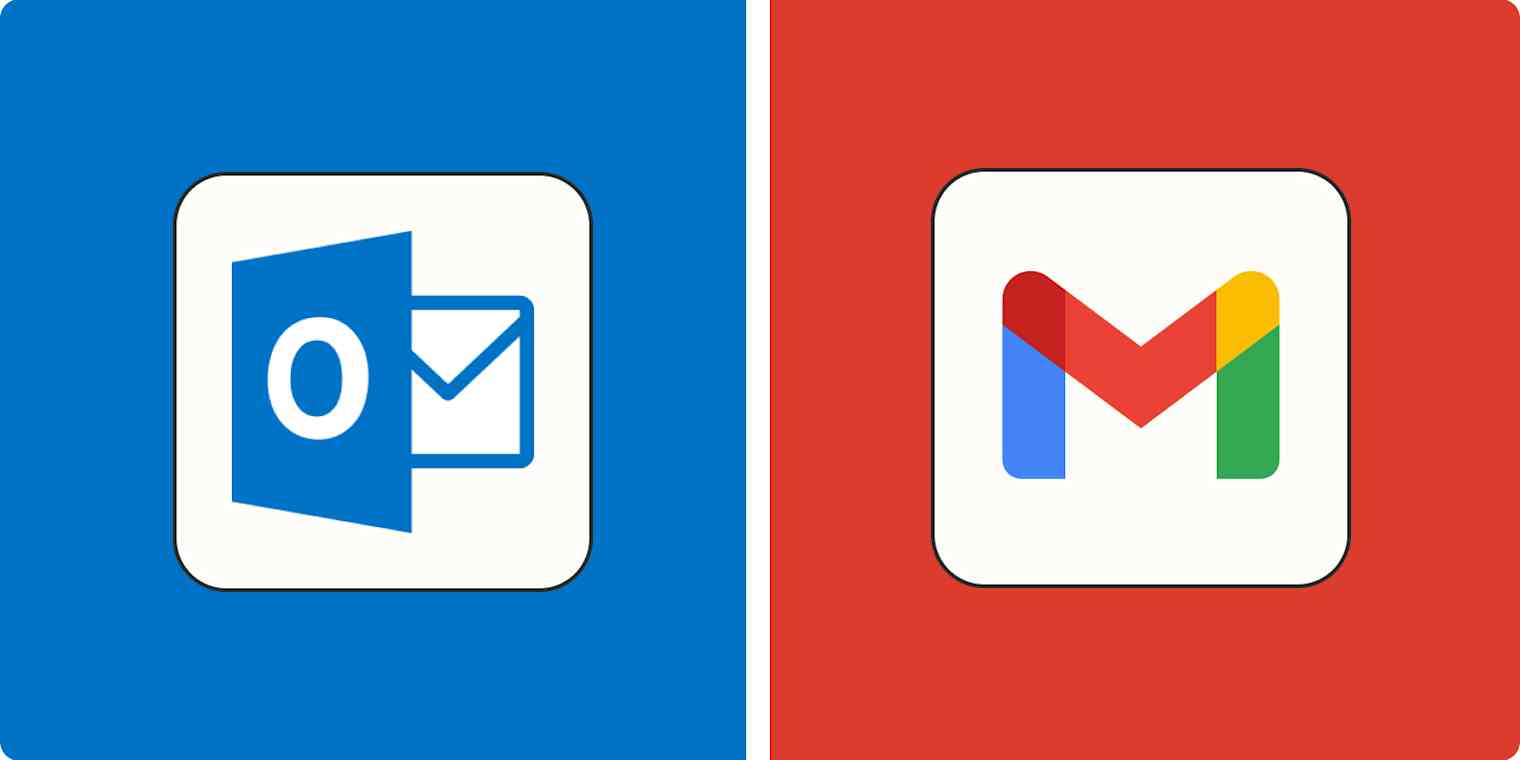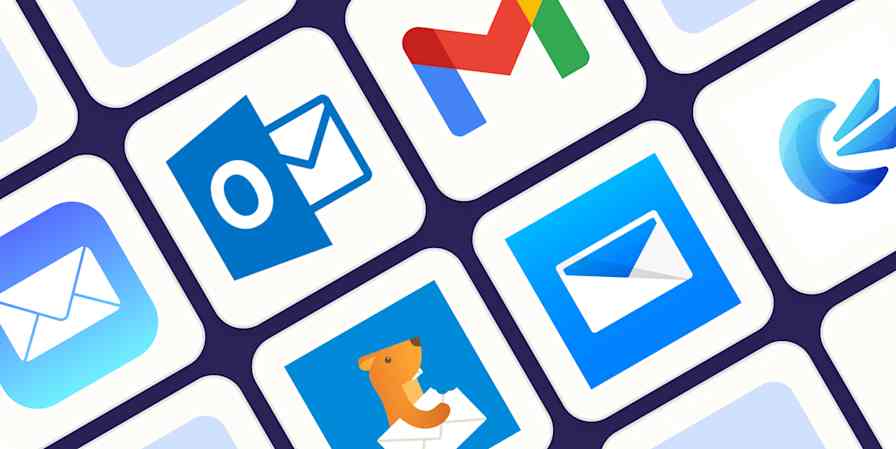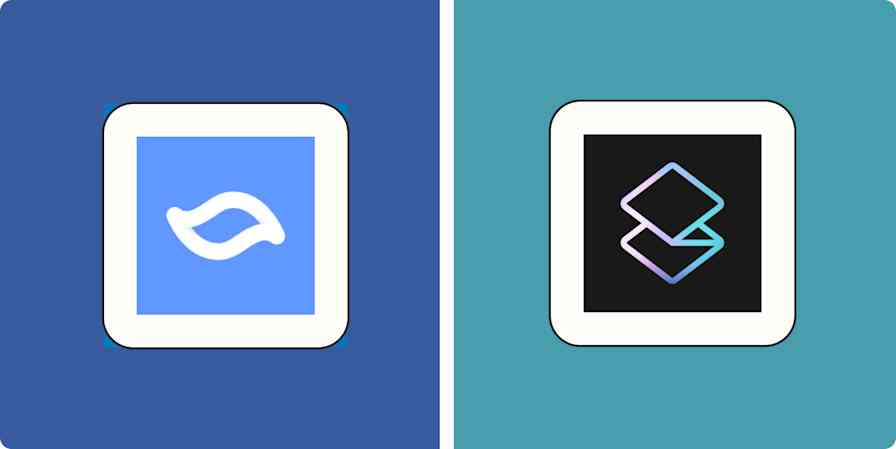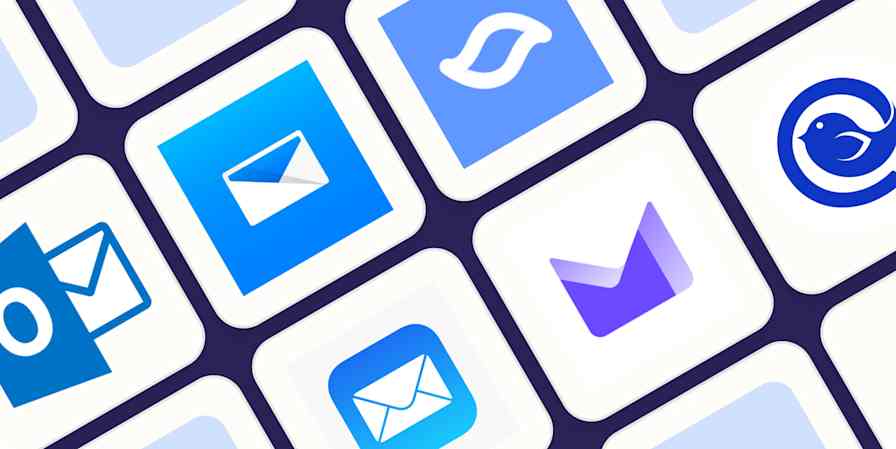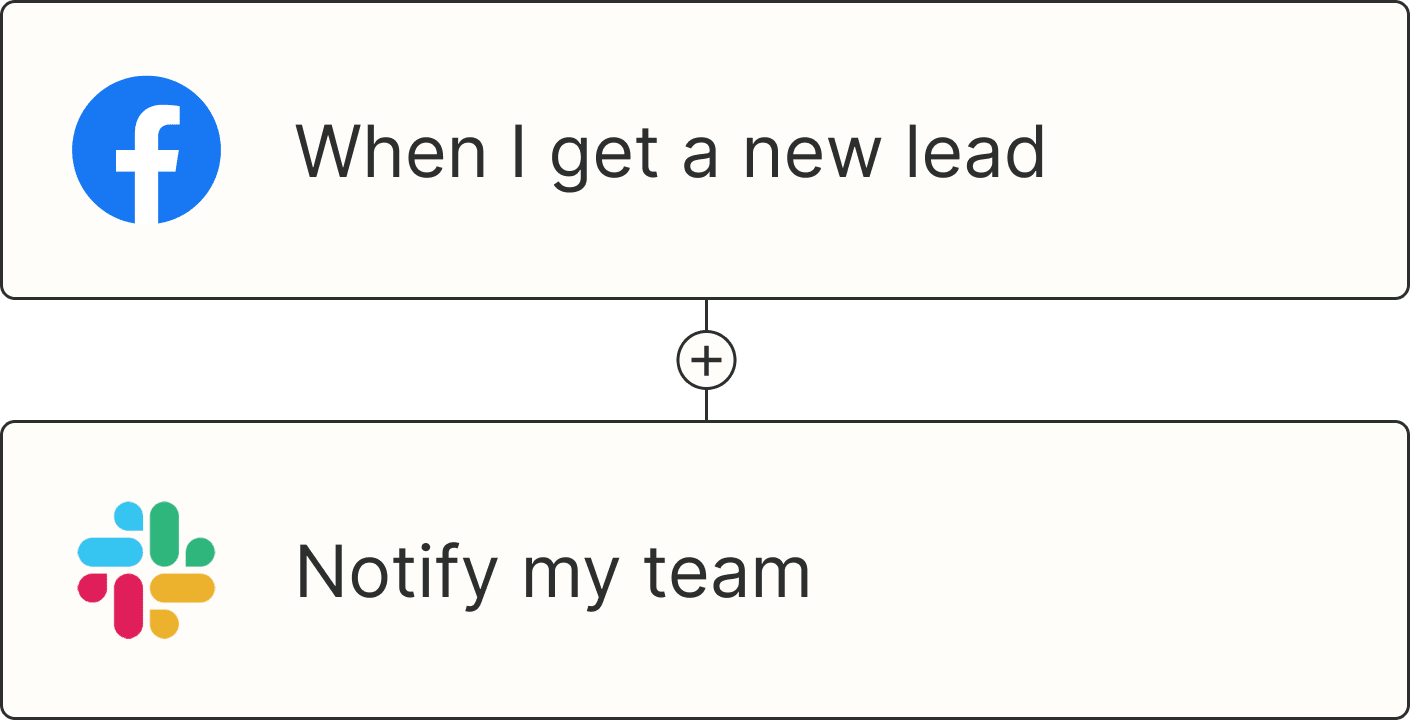Many folks are as fiercely loyal to their chosen email platform as they are to their sports team. That makes the world pretty divided on Outlook and Gmail, so I decided to get to the bottom of the Outlook vs. Gmail debate.
I'm a Gmail user, but I created new accounts on each platform to test them for myself. Here's what I found.
Table of contents:
Gmail has a better user experience on the free plan, but Outlook offers more free storage
Outlook organizes emails in more traditional folders; Gmail uses labels
Outlook vs. Gmail at a glance
Outlook: Best for Microsoft 365 users who prefer enhanced organization and want as much free storage as possible.
Gmail: Best for Google Workspace users looking for advanced spam protection and a simple interface.
| Outlook | Gmail |
|---|---|---|
Integrations | ⭐⭐⭐⭐ Outlook integrates with Microsoft 365; limited number of add-ins available; integrates with Zapier | ⭐⭐⭐⭐⭐ Gmail integrates with Google Workspace; thousands of add-ons available; integrates with Zapier |
Interface and ease of use | ⭐⭐⭐ Busier interface; easy to send emails, but the search feature makes it difficult to find past emails in the inbox | ⭐⭐⭐⭐ Intuitive, clean look; search feature makes it easy to find past emails in the inbox |
Storage | ⭐⭐⭐⭐⭐ 15 GB of free storage for Outlook | ⭐⭐⭐ 15 GB of free storage shared across Gmail, Google Drive, and Google Photos |
Security | ⭐⭐⭐⭐ Two-factor authentication, encryption, spam filters, safelinks, confidential mode, and more | ⭐⭐⭐⭐ Two-factor authentication, encryption, robust spam filters, safe browsing, confidential mode, and more |
Organization | ⭐⭐⭐⭐⭐ Uses folders and categories to organize inbox | ⭐⭐⭐⭐⭐ Uses labels to organize inbox |
Mobile experience | ⭐⭐⭐⭐⭐ A well-rounded mobile app that mirrors the online platform's functionalities (mail, calendar, apps) | ⭐⭐⭐⭐⭐ A robust mobile app that's easy to navigate with specific Gmail features (mail, chat, meetings) |
Pricing | ⭐⭐⭐⭐⭐ Free for personal use; personal plans for up to 6 users with more tools, storage, and features, starting at $19.99/year for Microsoft Basic; Business plans with premium apps starting at $6/user/month for Microsoft 365 Business Basic | ⭐⭐⭐⭐⭐ Free for individual use; business plans for Google Workspace (including Docs, Slides, Forms, etc.) starting at $7/user/month for Business Starter
|
AI features | ⭐⭐⭐⭐ Email summarization, customizable drafting, event scheduling, integration with other Microsoft 365 tools | ⭐⭐⭐⭐ Smart Compose, Smart Reply, email summarization; Gemini writing assistance (drafting, writing, and proofreading) |
If you like Microsoft, use Outlook; if you like Google, use Gmail
Outlook and Gmail are both robust email apps, so there are some things that won't tip the scales.
The mobile apps for each platform feel similar in their user experience and interface layouts.
Both provide access to a measure of (limited) interface customization.
Both offer paid business plans with comparable pricing.
Both have standard inbox features like the ability to snooze or schedule emails and message reminders (called nudges in Gmail) that remind you to follow up.
Both let you use templates that come in handy when crafting emails.
Both Outlook and Gmail are robust, well-developed apps that, unless you're looking for one specific feature (like labels on Gmail or folders on Outlook), it's hard to say one's better than another. It's like comparing a PC to a Mac.
The main difference is really that Outlook and Gmail both integrate with their respective suites—Microsoft 365 and Google Workspace. Whether you're an individual or an organization, integration is going to play the biggest role in which platform you prefer. If you're working mostly with Microsoft products, Outlook is your best bet; if you spend most of your time on Google apps, go with Gmail. It's honestly that simple.
Gmail offers a better user experience on the free plan, but Outlook offers more free storage
While the look and feel of an app can be pretty subjective, most folks agree that the Gmail interface is more intuitive—especially on the free plan.
It's easy to navigate and has a modern look, prioritizing the user experience over all other end goals—including serving ads, which is rare for a global brand fueled by ad revenue. Outlook, on the other hand, feels a bit cluttered no matter where you're using it, and it has a lot of tabs to sift through.
When I log in to my free Outlook account, I'm immediately faced with an extremely large and distracting banner on the right-hand side.
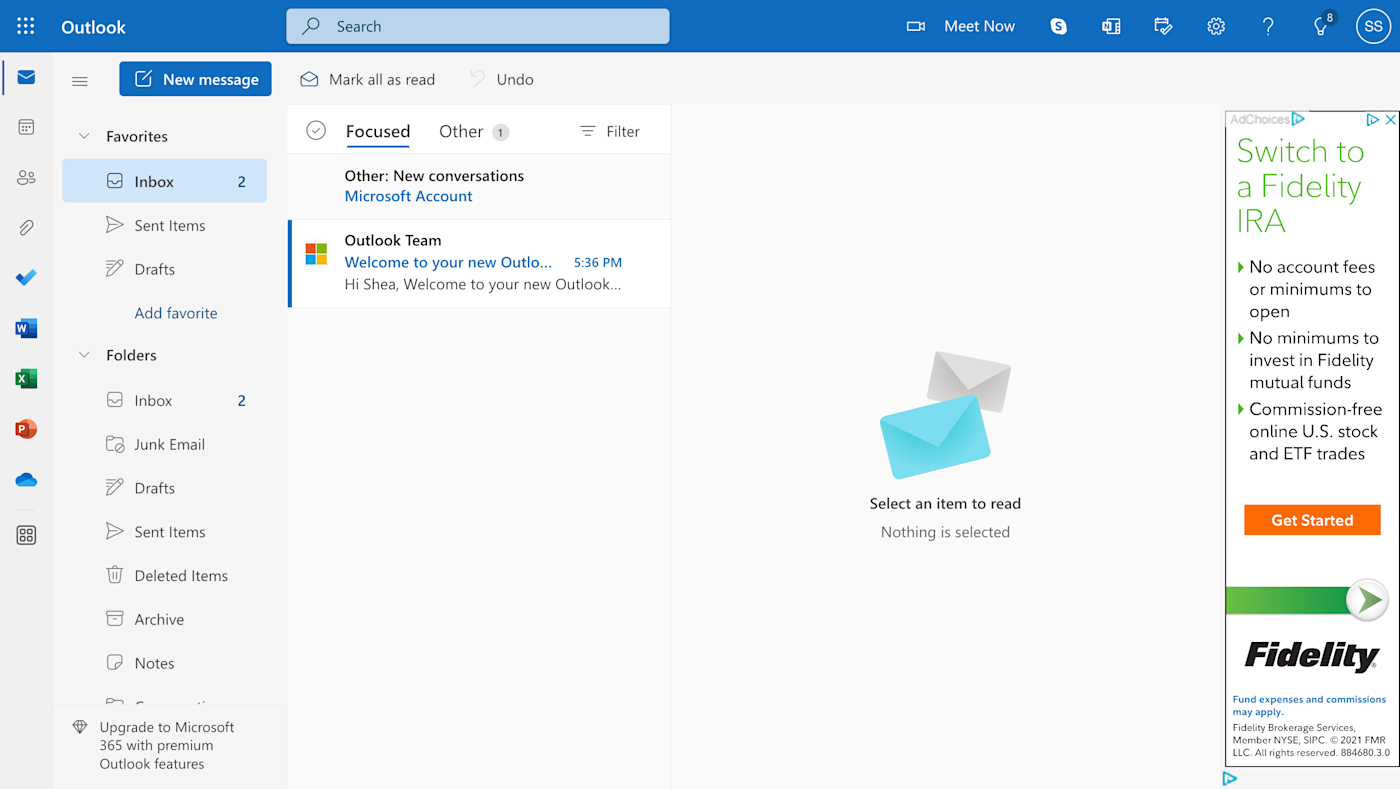
While I understand that both platforms need to advertise in order to continue to offer free versions (I'm a marketer after all), Gmail's ads are nicely tucked away in the Promotions and Social tabs. Since I rarely ever click on those tabs anyway, I almost never see the ads in the first place.
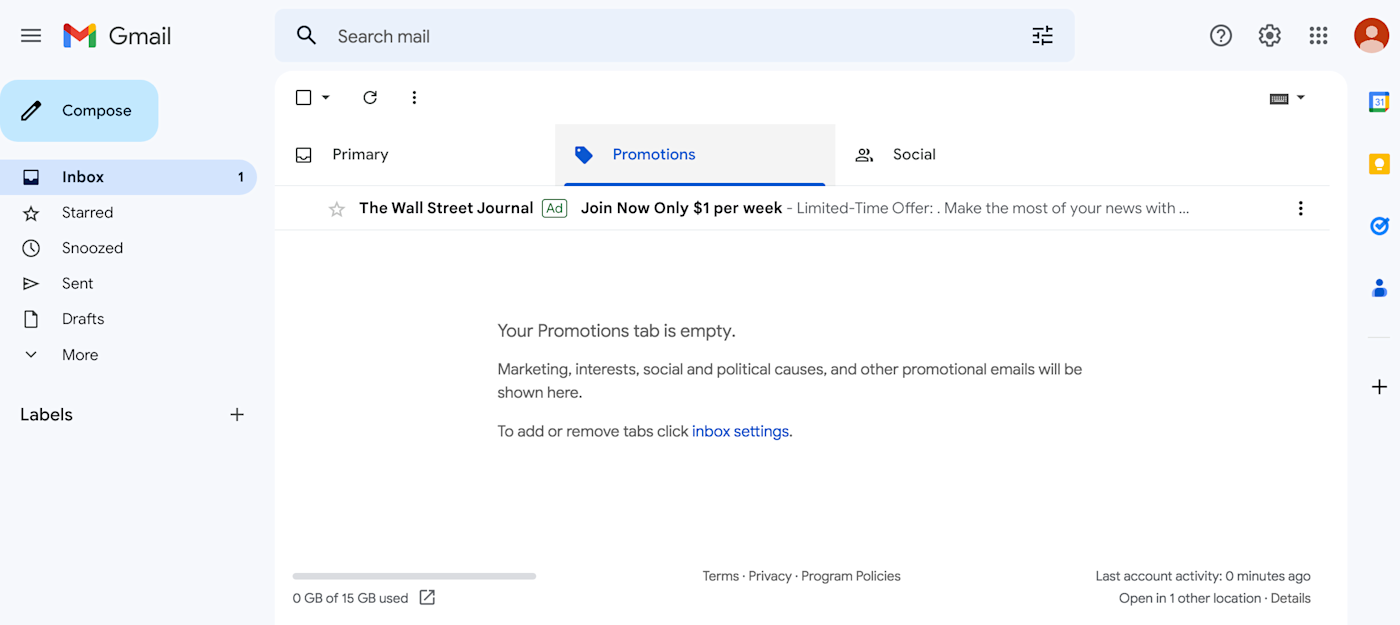
Outlook has been the butt of email jokes for about as long as the internet has been around—despite it being a perfectly functional email platform—and the user experience may have something to do with that. It's a small difference in the grand scheme of features and capabilities, but it's clearly something people are talking about.
Another aspect to consider when comparing these free plans is storage space. While both Outlook and Gmail offer 15GB of storage space, it's important to note that Gmail shares its storage space with Google Drive and Google Photos. So, if you frequently use other apps in Google Workspace, you may hit your storage limit faster than you would with Outlook.
If you've hit your Google account storage limit, there are simple ways to free up space.
Gmail has better search
It's no surprise that Gmail's search bar works quite well—it's Google. You can filter your search to only emails sent from you, emails with attachments, or emails sent or received in the last seven days. You can also create a custom filter to narrow your search even further.

While researching Outlook on social media, their search feature was one of the most frequent complaints I saw, with many users mentioning it returning irrelevant results. I noticed the difference, for sure, but it does offer similar search filters as Gmail—making it possible to find the exact email you're looking for (even if it takes a little longer).
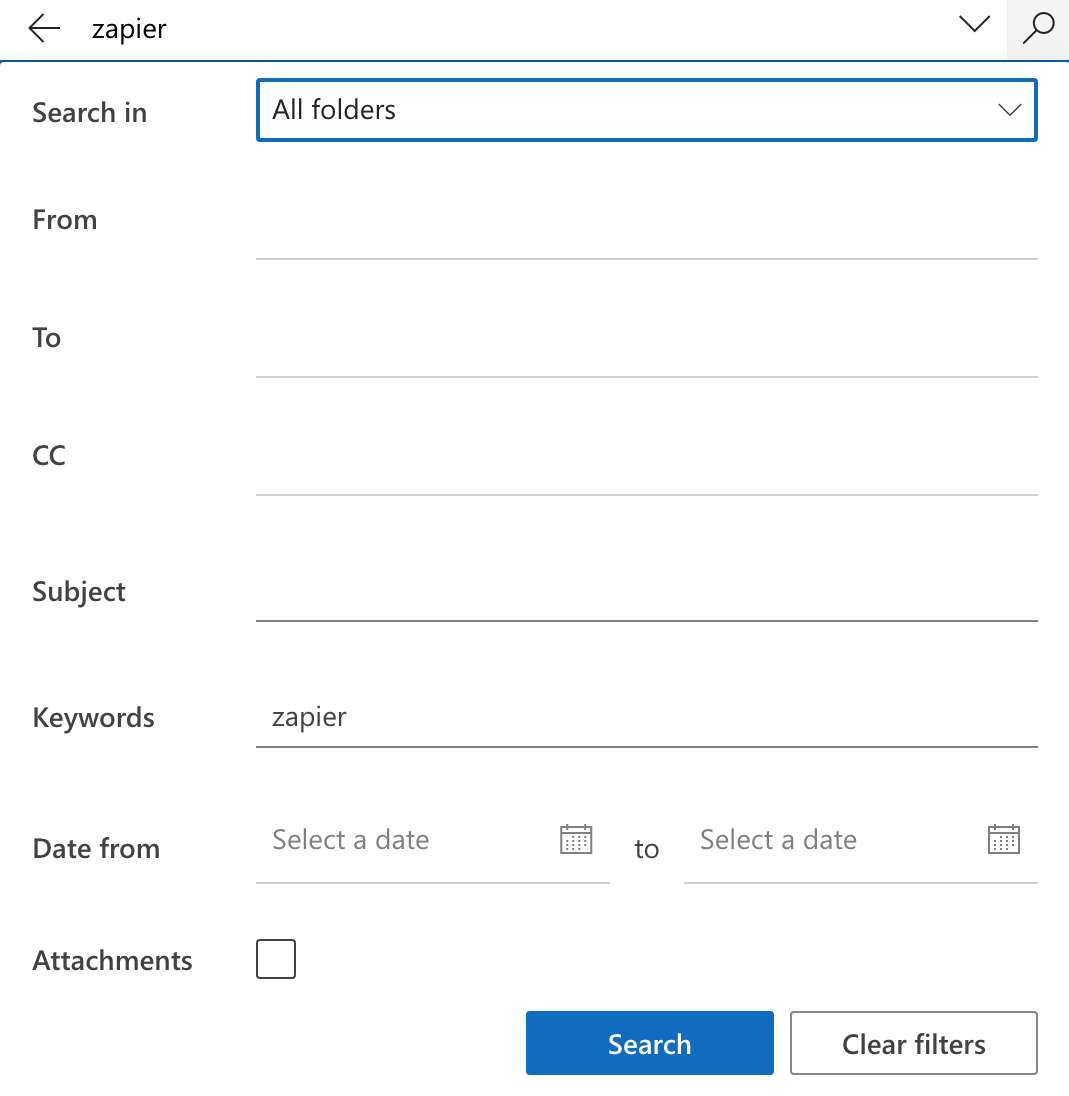
Outlook organizes emails in folders; Gmail uses labels
Outlook uses folders and categories to help users organize their inboxes. For example, if you work with multiple clients, you could create a folder for each client to help you stay organized. If that's not enough, you could add another layer and create different categories for each project you're working on—like I did in the example below.

Overall, I found Outlook folders and categories to be very intuitive, and I can definitely see why users like them.
On the other hand, Gmail uses a labels feature for organization—but you can use labels as both folders and labels. Let me explain.
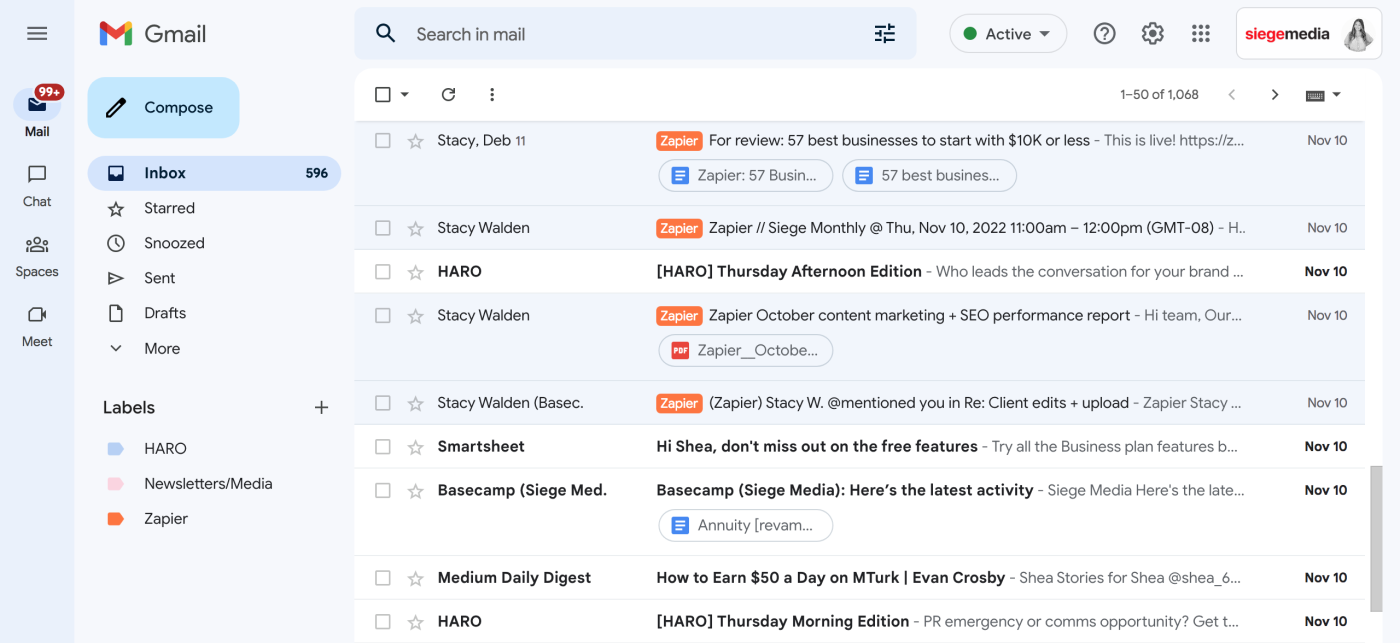
As you can see in the screenshot above, when I create a "Zapier" label, it labels the email in my inbox and puts those emails under the "Zapier" label tab. So, if I'm looking to only read Zapier-related emails, all I have to do is click the Zapier label to view them (see what I mean about labels doubling as folders?).
You can also nest a label under a different label. For example, an email from Zapier regarding this blog post could be labeled "Outlook vs. Gmail" and nested under the parent "Zapier" label. You can even set up a filter to automatically label certain types of emails if you want.
Just like how some people hang their jeans in the closet and others fold them in a dresser (or, if you're like me, just throw them on a chair), everyone has their own methods to the madness when it comes to organization, so it's really about personal preference here.
Both offer solid AI assistance, but neither is perfect
Both Outlook and Gmail have made strides in the AI-for-writing assistance department in the last year, and they also now offer AI-driven email summarization and drafting capabilities. Their AI features are only available on paid plans, and each has a slightly different focus.
Outlook's AI, Copilot, can summarize lengthy email threads (or your entire inbox), suggest replies, and draft emails with customizable length and tone. Copilot is deeply entrenched in the Microsoft ecosystem, and because Outlook has a built-in calendar, it can also schedule meetings for you straight from your inbox.

Gmail's AI, Gemini—now present in your inbox whether you like it or not—offers features like summarizing emails, drafting responses, and providing quick "autocomplete" suggestions when you're typing. It also includes Smart Compose for writing assistance and Smart Reply for quick responses. Gmail's AI is designed to streamline communication—its focus is less on automating task creation based on email contents and more on improving your actual communication.

Either way, one thing is for sure: it's still a non-Terminator AI situation.
Both apps integrate with Zapier
Email is best when it takes up the least amount of time possible. Outlook and Gmail both connect to Zapier, which means you can automate them and connect them to thousands of other apps you use for work. Automatically save email attachments, send notifications straight from your inbox, and follow up with new leads faster.
Learn more about how to automate Outlook and how to automate Gmail, or try one of these pre-built workflows.
More details
More details
Zapier is the leader in workflow automation—integrating with thousands of apps from partners like Google, Salesforce, and Microsoft. Use interfaces, data tables, and logic to build secure, automated systems for your business-critical workflows across your organization's technology stack. Learn more.
Outlook vs. Gmail: Which is best for you?
The most important factor in your decision is going to be whether you live and breathe Google or Microsoft. I collaborate with my coworkers in Docs and am constantly making fun lists in Sheets with my friends. Since Google Workspace is basically my second home, I'll be sticking with Gmail.
Outlook vs. Gmail: FAQ
Is it better to use Outlook or Gmail?
The answer to this question largely depends on personal preference and specific organizational needs. Gmail is easy to use and works great with other Google programs, and can scale both up and down. Outlook is more geared toward larger businesses with its powerful calendar and Microsoft 365 compatibility. If you want something clean and simple, Gmail's your go-to. Need more features and that serious businessperson vibe? Outlook may be the choice for you. Neither is really "better" than the other.
Why do companies use Outlook instead of Gmail?
Many companies choose Outlook because it works so well with other Microsoft programs they may already be using—like Teams and SharePoint. This makes it super convenient for things like scheduling meetings, sharing files, and generally working together. It's less about one tool being better than the other and more about which suite of tools the team is already using.
What are the disadvantages of Outlook email?
While Outlook is a powerhouse for businesses with its Microsoft integration and advanced features, it's not without drawbacks. The interface can feel a bit cluttered compared to Gmail's clean design, which can be a hurdle for new users—especially the ads in the free version. And while all the customization options are great for power users or bigger teams, they can be overwhelming if you just want a simple email experience.
Related:
This article was originally published in October 2019 by Marshall Gunnell and has also had contributions from Hachem Ramki and Abigail Sims. The most recent update was in February 2025.
